Teardown/Explanation of (another) cheap walkie-talkie
Here's the inside of the second worst radio I've ever seen (the worst, naturally, being this abomination). After how bad the last one was, I somehow couldn't resist buying the other $3 radios (you pay $6 for two devices) on Ebay and seeing how they work.
These just arrived in the mail yesterday. The manufacturer once again decided that wasting money on trying to pretend (badly) to be a fancy radio was better than just producing a cheap product. The exterior of the radio has two fake knobs (I guess pretending to be volume and channel knobs) and one fake button, along with an antenna made to look like it's removable when it isn't. I can't say I'm surprised for $3, but maybe if they didn't bother with this and other gimmicks the device could have been cheaper or higher quality.
What these radios do is transmit audio at about 40 MHz. Each radio is tuned to the other, so you can hear transmissions from the other radio when in use. The range is pitiful (at least 10 meters), but much better than the terrible yellow walkie talkies I previously disassembled.
Exterior
As expected, the antenna is not removable, despite being made to look like it is. The plastic antenna housing part of the radio's structure, and the antenna even has a screw in the top.
There's a speaker/microphone combo visible behind a plastic grill on the front and a bright red LED that lights up when you flip the on switch. A black button on the side lets you transmit audio. When not transmitting, the radio speaker belches out a bunch of loud static.
The small LCD at the bottom of the device is somewhat interesting. When I got these in the mail (after weeks of shipping wait time), the LCDs were on. I assumed this was because the battery was included, but upon opening up the radios, no battery could be found.
Clicking through the LCD shows that they are basically reprogrammable digital clocks. You can set the time, along with AM or PM, and it will accurately track time. There is no way to turn it off. It also has (fake) radio channel selection, and you can click through the "channels" that do nothing.
Anyway, onto the teardown. Four screws, along with a fifth screw on the top of the antenna, are all it takes to get inside.
Teardown
With the screws out, the back panel peels out. Here's the inside:
As you can see, it takes a 9-volt battery. Ignoring the main circuit board for now, direct your attention to the bottom of the frame. See the white/brown circle? That's the clock LCD module, and it's totally disconnected from both the battery and the rest of the radio.
The module isn't even held in, and you can easily pull it out to use as a standalone clock.
Four tiny screws hold the device together. Pull these out and the metal frame will fall off, taking with it two even tinier metal pins that act as the buttons. Inside is the LCD itself, along with a tiny PCB containing a crystal oscillator (for timing the clock), along with an unknown circuit covered in hardened epoxy (probably to prevent reverse engineering?).
I took apart the entire module and took pictures, but unfortunately none of the pictures actually saved onto my phone. I didn't realize this until I had already put the whole thing back together. It was pretty tedious and I almost lost several screws, so unfortunately I don't have the images of this. Sorry about that - if anyone is really interested in seeing the inside, let me know in the comments and I'll crack it open again to take pictures that actually save this time.
Next up is the main radio board. This is the big green PCB, and it's held down with two metal screws. Here's a view of the green side, with a ton of surface mount electrical components:
You can see five transistors and countless resistors/capacitors cluttering the board. This circuit takes in audio from the speaker (which is being used as a microphone), modulates a carrier signal with this audio, and transmits the signal on an electromagnetic wave out of the antenna.
The frequency of transmission is about 40 MHz as I have measured. This is significantly lower than the yellow walkie-talkies (which were just short of 50 MHz), but the circuit looks almost identical, leading me to believe that it can be tuned somewhat easily by replacing the right components (that's something I want to try sometime). Contrary to what I said in the yellow radio post, this frequency is actually legal to use in the US for walkie-talkies.
Reverse engineering this circuit is definitely do-able and sounds like an interesting project if I ever don't have things to do. However, the capacitors are not labelled, so it would take a very long time to measure each one for a reverse schematic.
I took out my macro lens and took some close-up shots of some of the transistors. I'm using my phone for this so they aren't the best quality but I hope it gives a better view of some of these components:
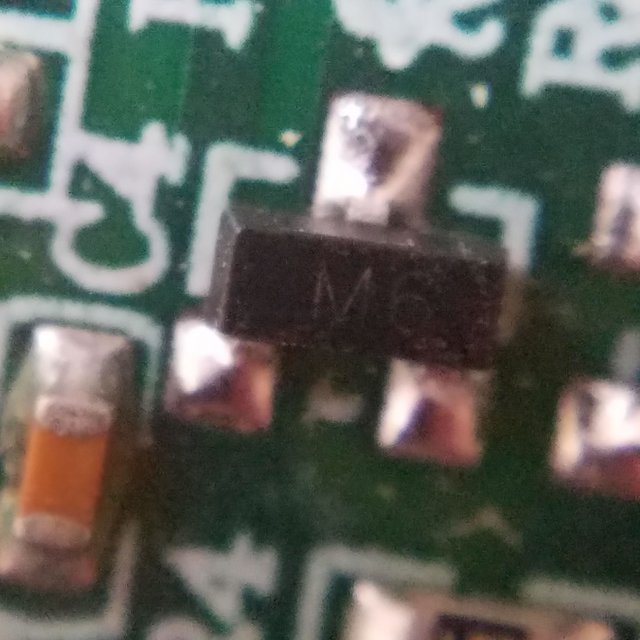
Somewhat blurry shot of what appears to be a 2SA1611 PNP transistor (labelled M6), along with a surface-mount ceramic capacitor.
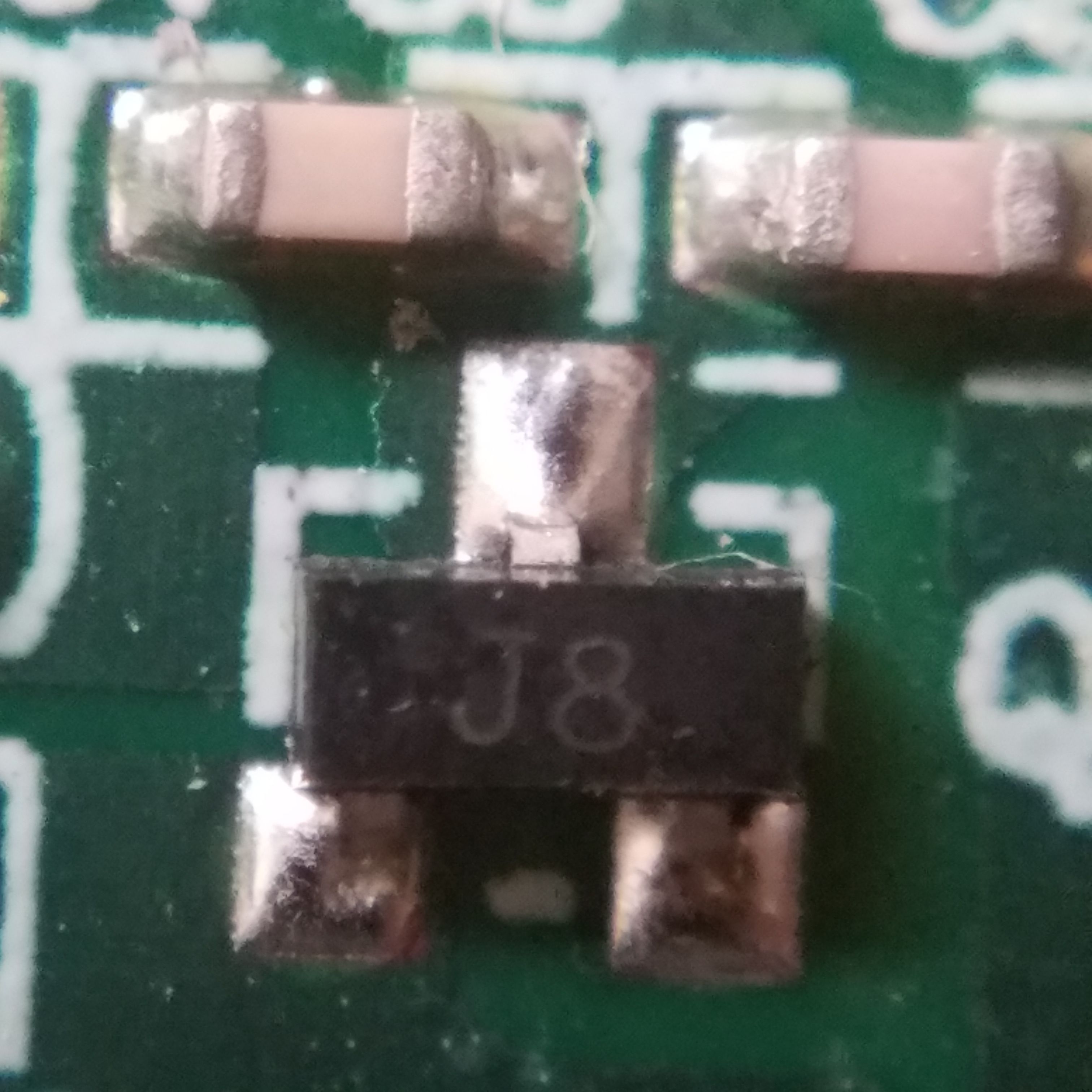
Two ceramic capacitors and a S9018 NPN transistor.
Now to flip the board over. After removing the two screws, here's what the back of the board looks like:
There's not much up top. Here you can see a big push-button, a switch, two electrolytic capacitors, a big coil and a through-hole inductor, and a red LED. The inductors are likely used as part of filters for incoming signals or as part of the transmitter. The LED just turns on when you turn on the radio. The yellow wires go to the speaker/microphone and the white wire goes to the antenna.
Speaking of the antenna, here it is in all of its underwhelming mediocrity:
The antenna is just a big, pretty strong spring that goes up the frame of the radio. It does work I suppose, so it's not all bad. It would be nice if it was a removable antenna but that isn't happening on radios this cheap.
The last component to cover is the speaker itself. Here it is, located under the board:
As with many cheap radios, the speaker is serving as both a speaker and a microphone. When the radio is on, the speaker outputs loud static, or the voices of whoever is using the other radio. When transmitting, the speaker turns off and acts as a microphone. Pressure waves (sound) hit the speaker, causing it to vibrate. These vibrations are picked up by the circuit and sent out via the carrier signal to the other radio.
That's about it for this teardown. I'd like to see if I can modify this to transmit on a higher frequency. I think it should be possible if I can identify where the transmitting oscillator is, especially since I'm pretty sure that's exactly what the manufacturer did to make essentially the same board work on the yellow walkie-talkies, which are 10 MHz higher.
Overall these radios are pretty awful, but they are slightly better than the other awful radio I've taken apart and have their own pointless but functional digital clock, so I suppose they are only the second worst radio I've seen.
Let me know if you have any questions/comments, and as usual please point out any errors I may have made.
Thanks for reading!
All images in this post are my own. You are welcome to use them with credit.
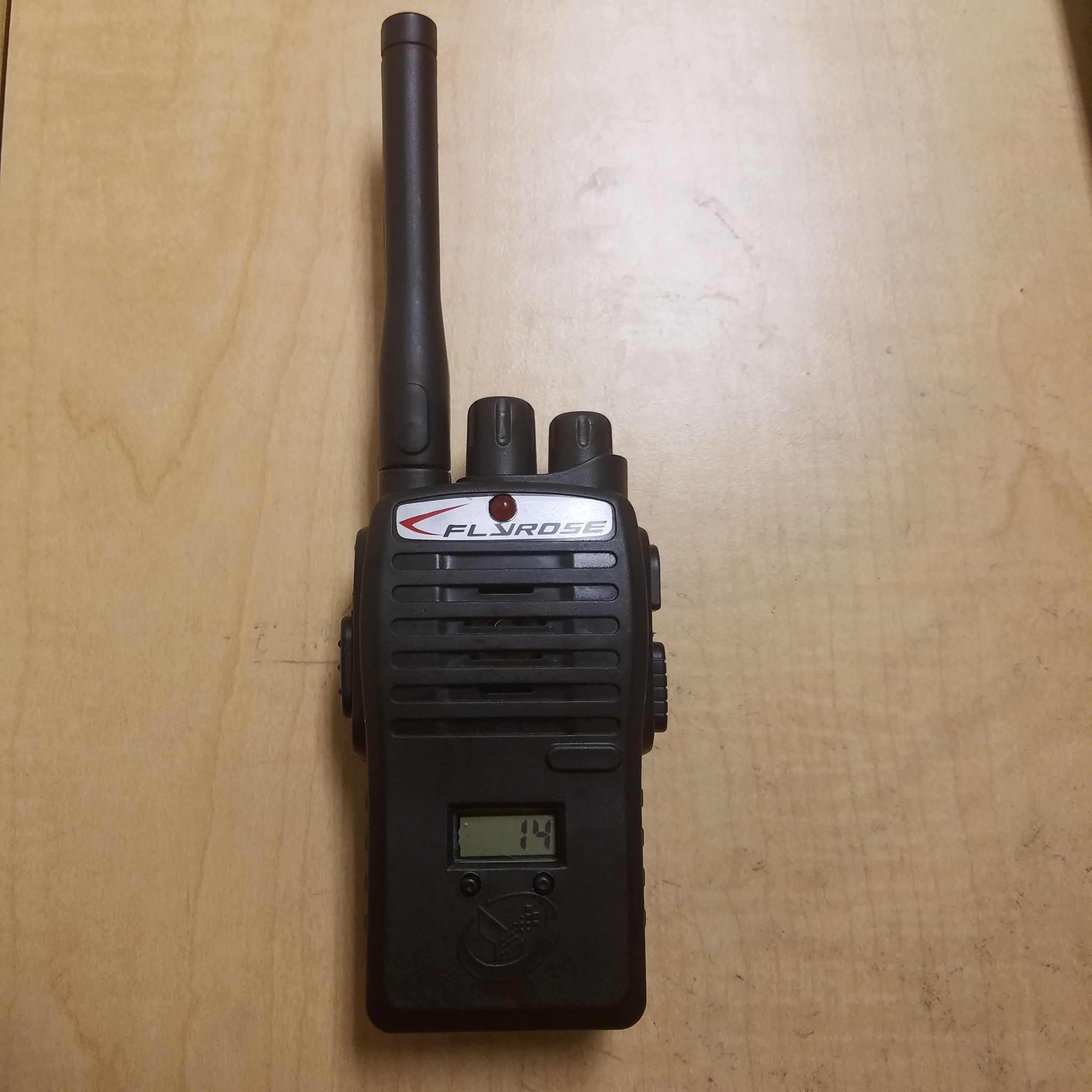
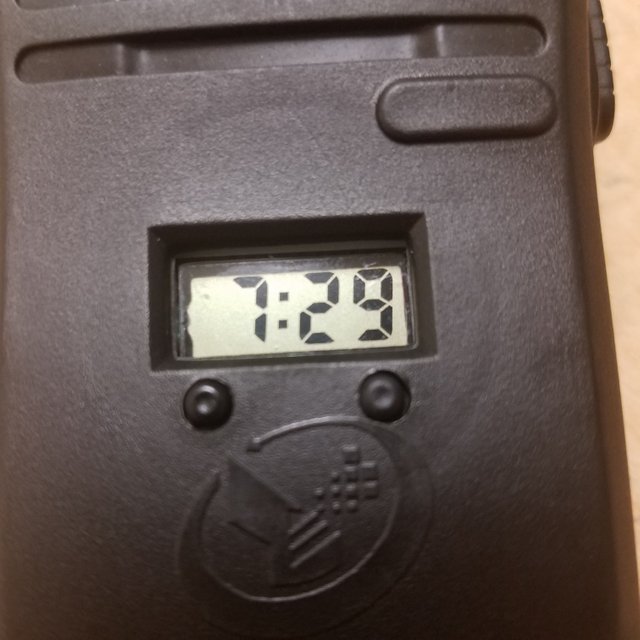
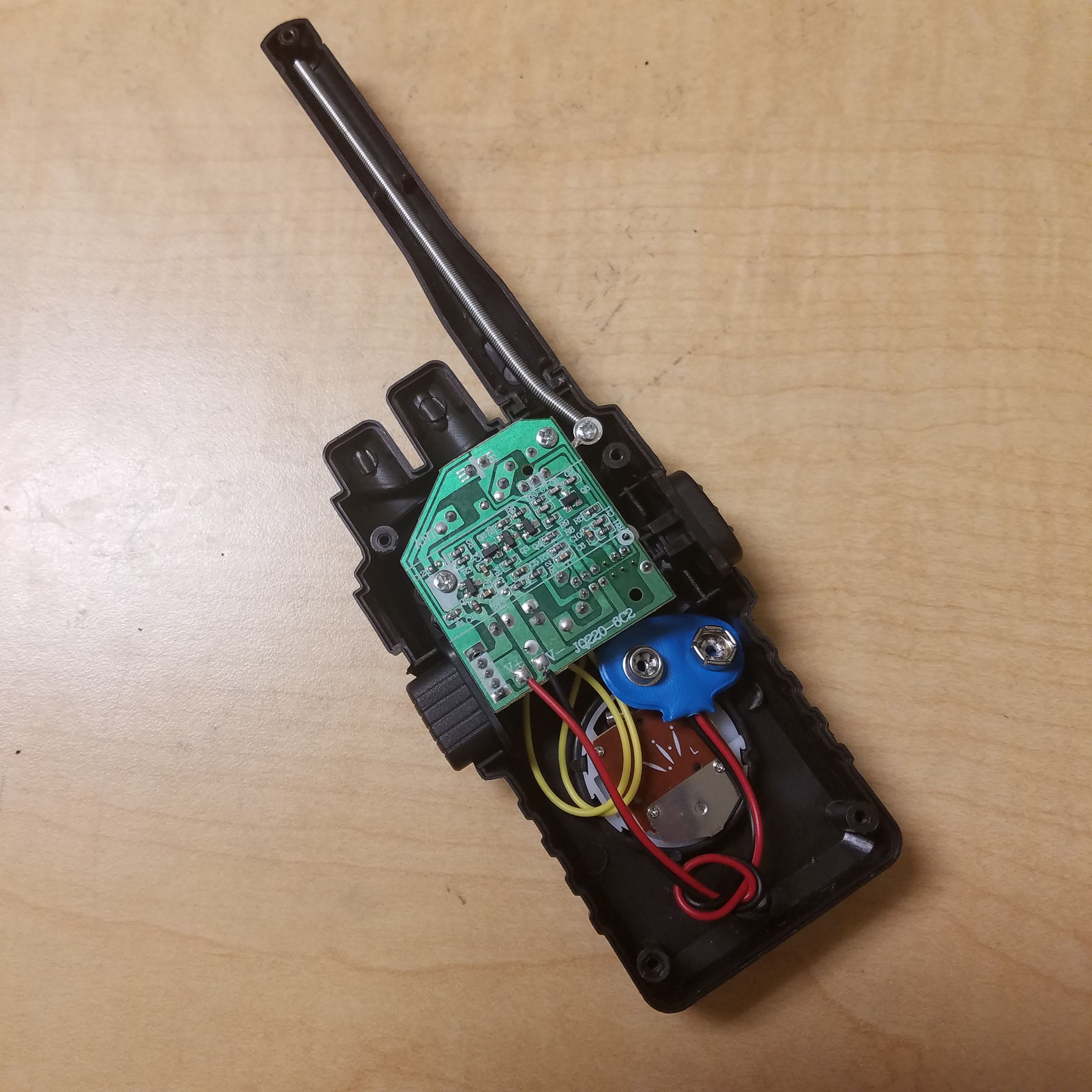
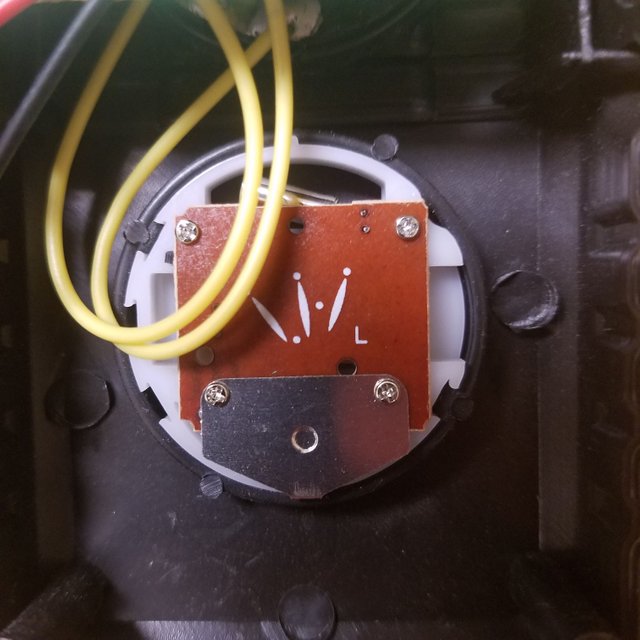
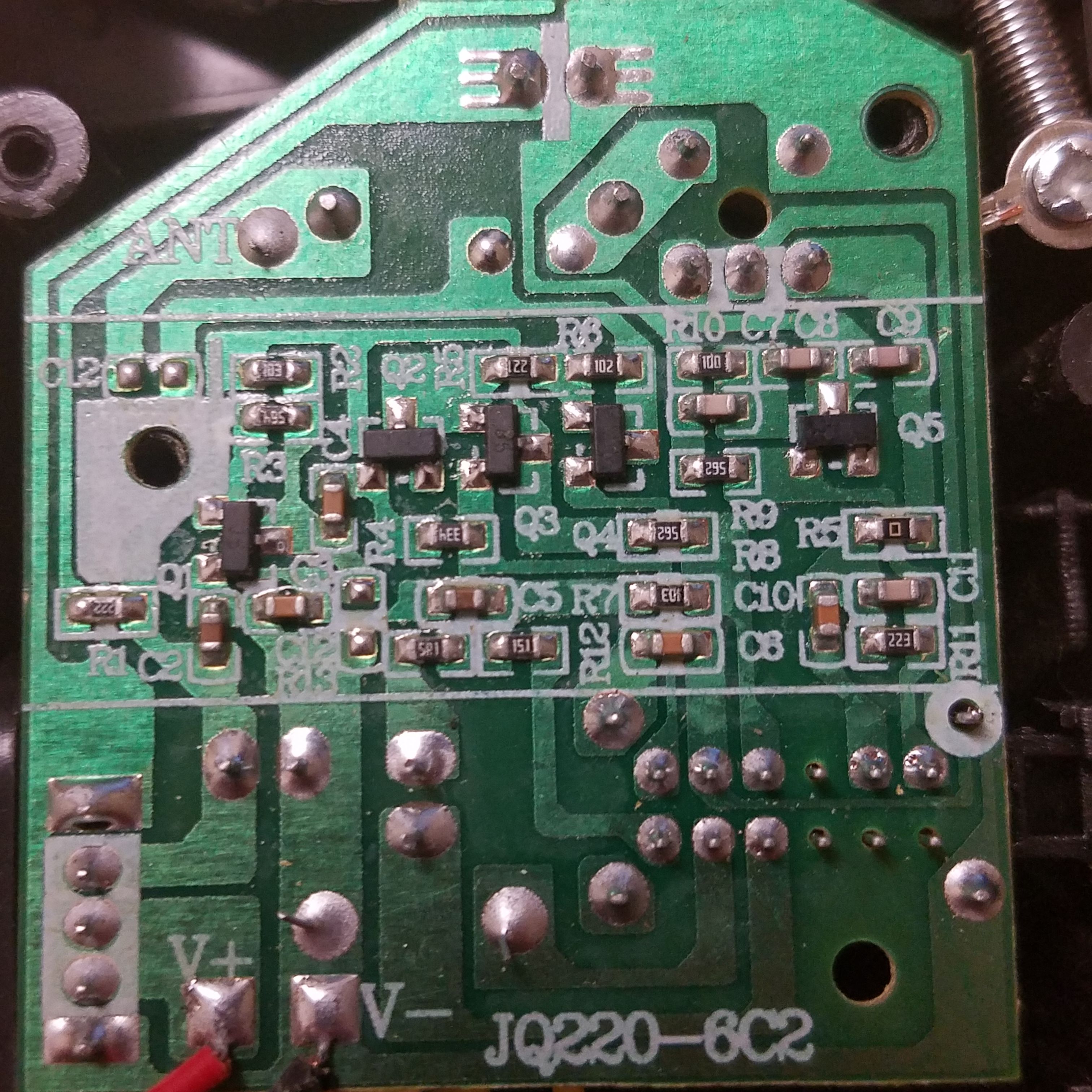
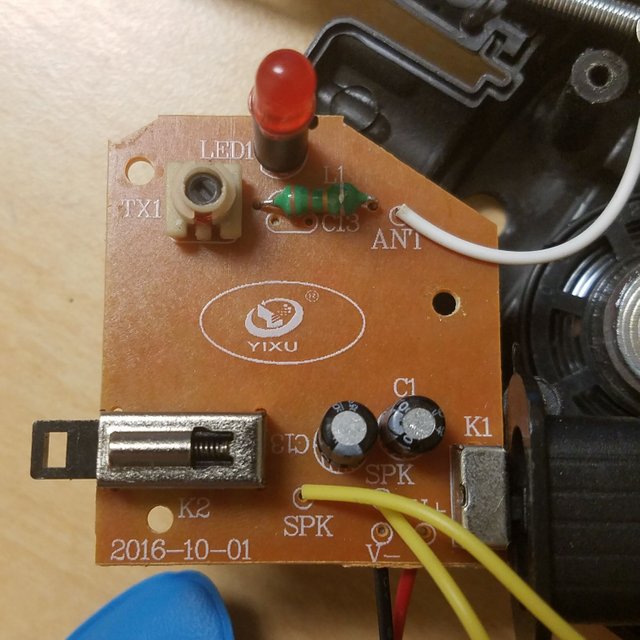
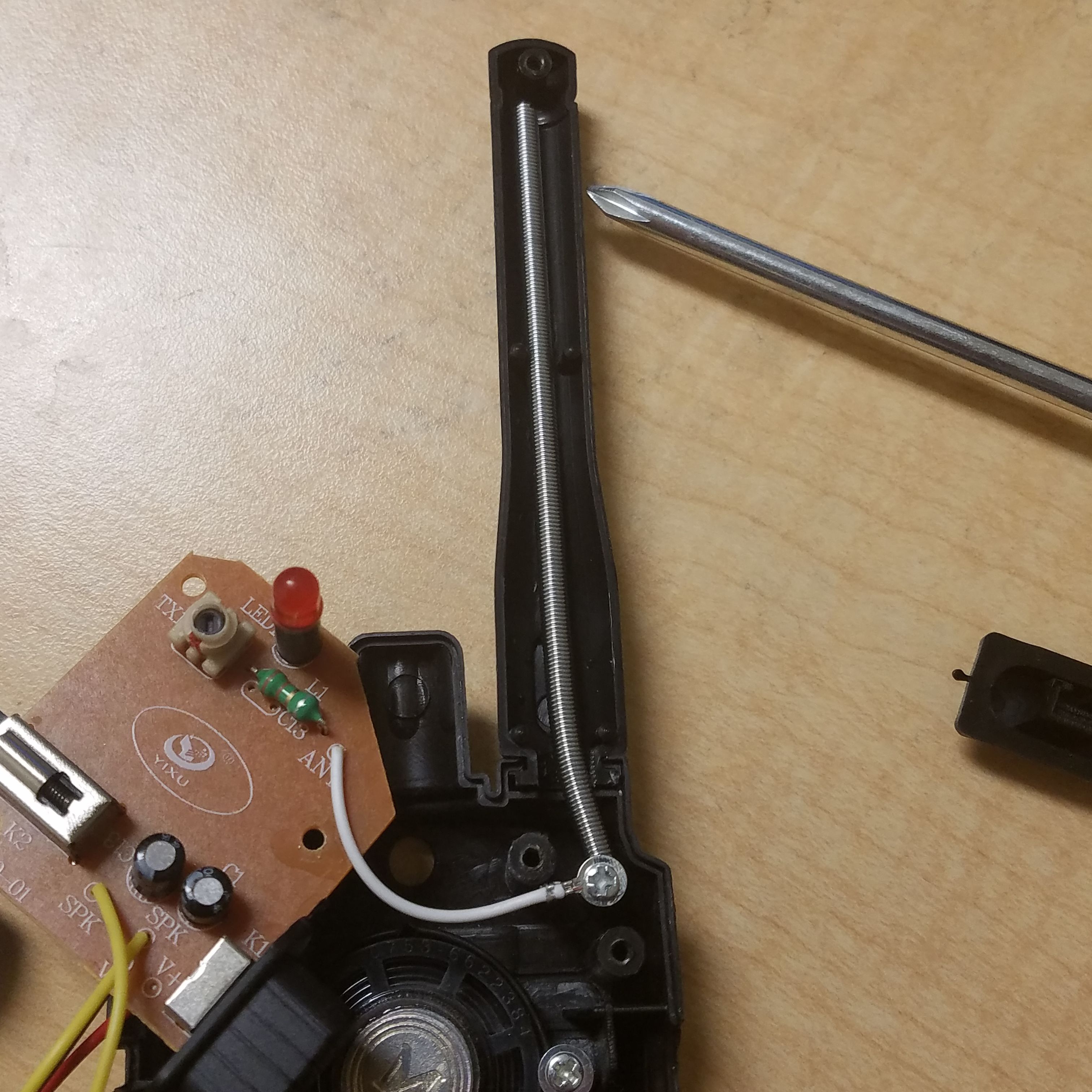
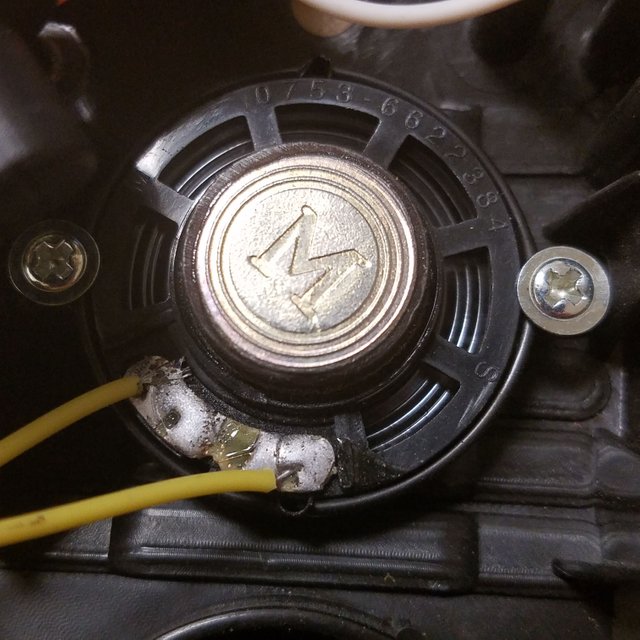
Being A SteemStem Member
More great work @proteus-h! I've got no real comments on this one apart from it's incredible what
$31 STEEM buy's you today.Indeed! Cheap Ebay electronics are some of my favorite purchases. Many of them are kind of bad, but for a few bucks you can afford to lose a few.
The biggest downside is that there is no penalty from Ebay for faking things, like the channels/frequency of these radios. I already knew going into this that it was going to have no channels thankfully so I still got a good deal. I'm going to try swapping out some of the coils in this radio to see how much I can change the frequency.
lovely post my friend....keep up the good work.
Every time I am surprised when I read or watch reviews of some cheap equipment. I'm a little scared of how much bad stuff is sold, and okay, these radios for $ 3, but I have several times come across reviews of headphones for $ 100 or more. In fact, it was a fake, which at best just did not work, rather than harming the user. I work as a receptionist at a hotel. I was shocked when I found out that some hotels use cheap communication systems from underground stores. I ordered all the equipment from Choicecommunications.ie, because there are reviews, licenses. I, as a manager, do not want to make my employees uncomfortable because of bad technology.